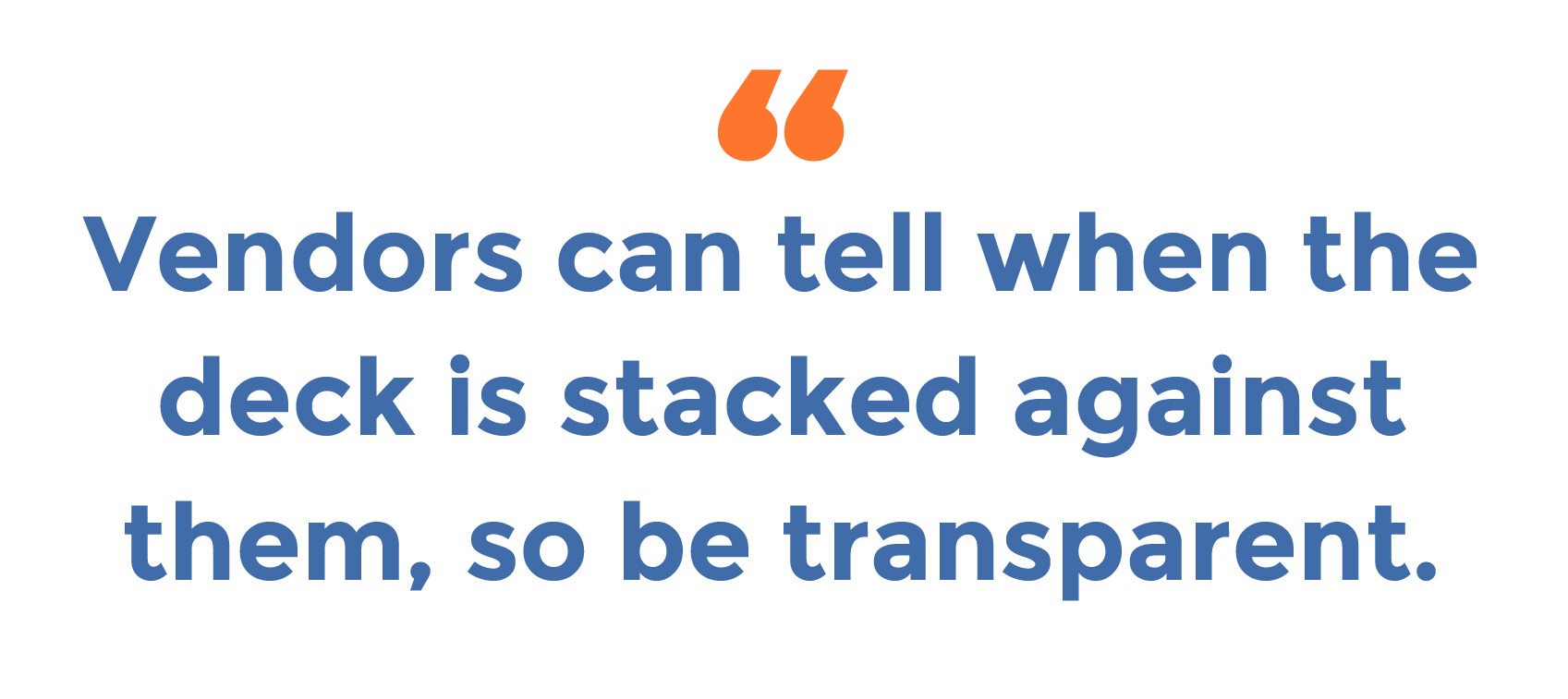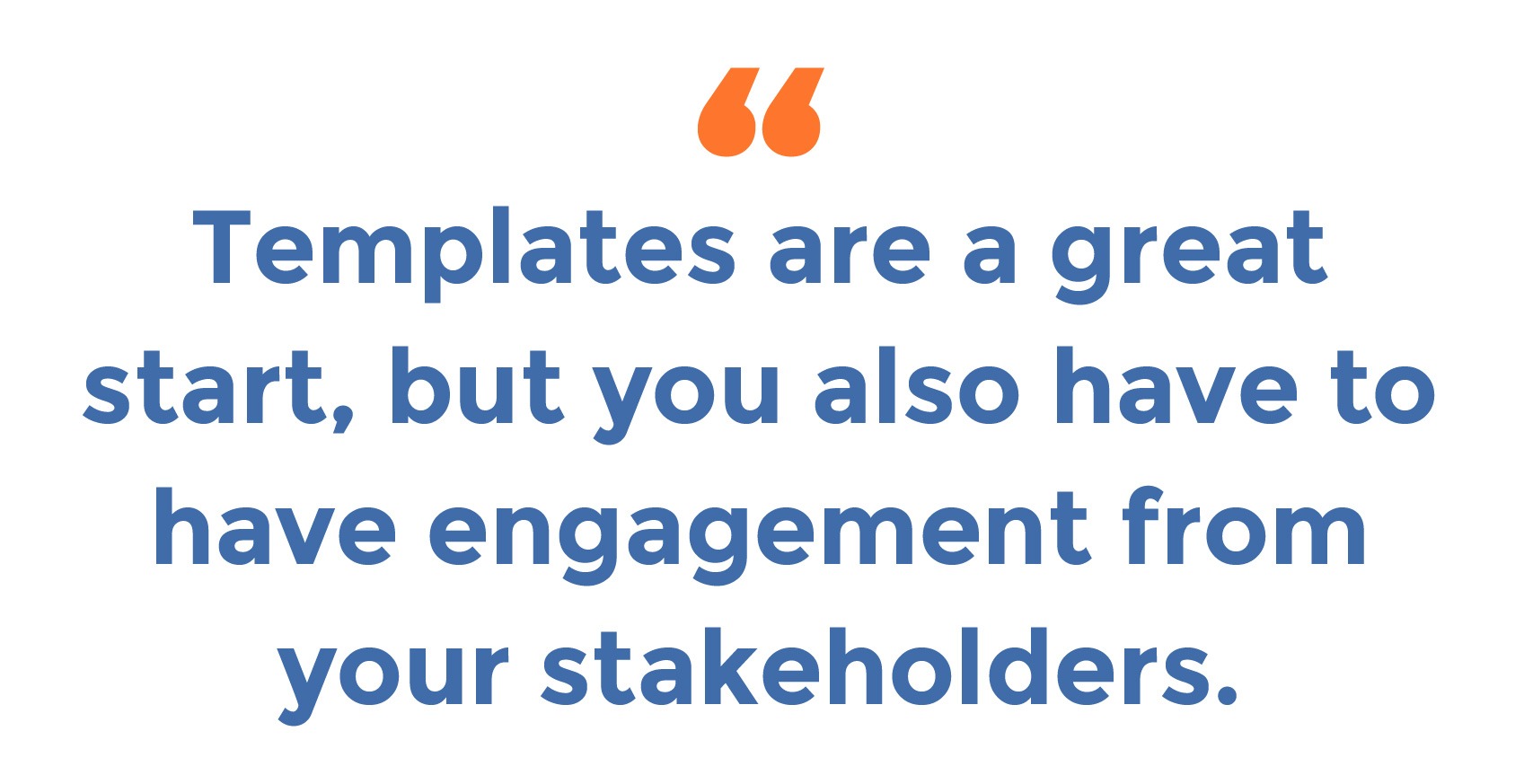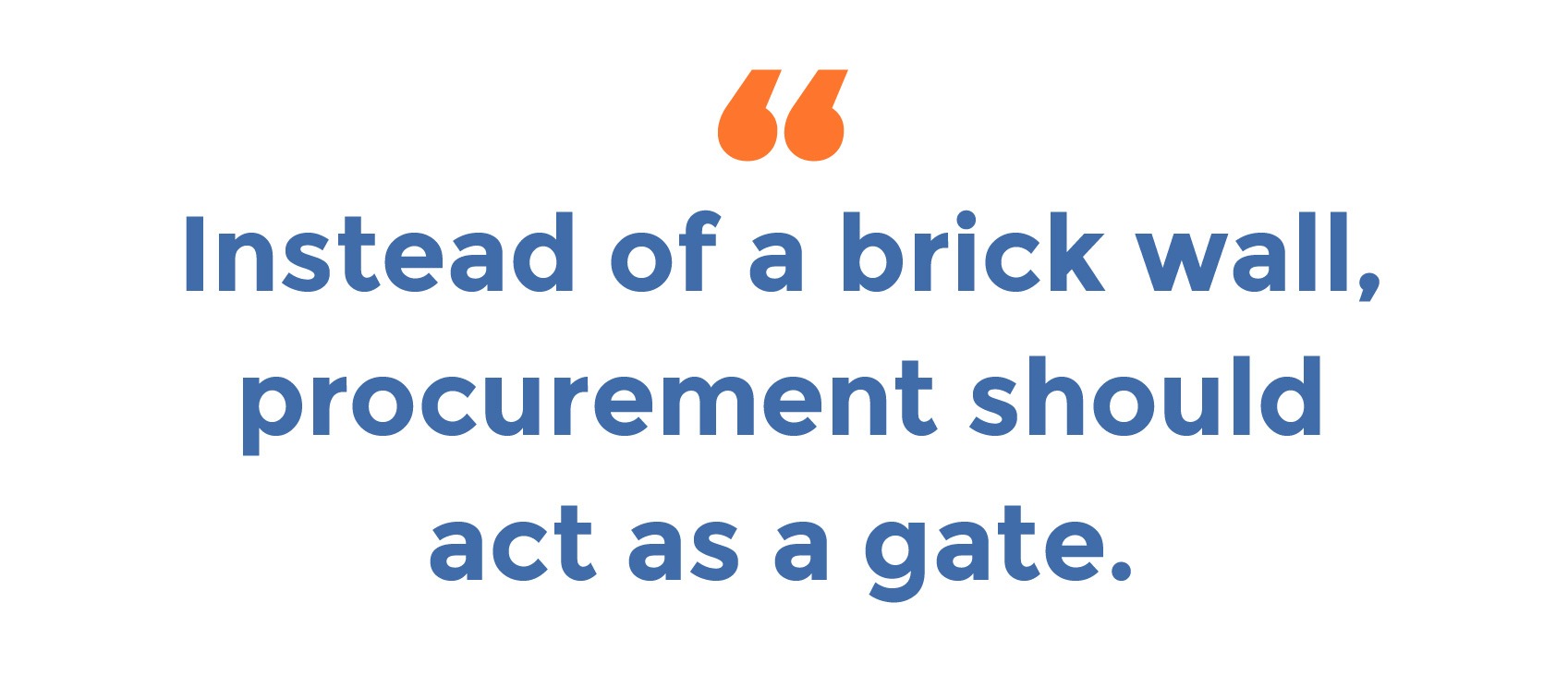In the Art of Procurement RFP webinar titled, Misused and Misunderstood: Reclaim the Power of the RFP, RFP360’s co-founder and COO, Dave Hulsen joined host Philip Ideson for a discussion about how to make the RFP process more strategic and streamlined. The webinar explored Dave’s background and experiences, common frustrations around the RFP process, and questions posted by attendees.
This blog will offer a recap of the RFP webinar with insights from Dave and Philip. The topics include how to make the most of RFx processes, best practices for building RFPs, tips for vendor negotiation and communication, and more. Explore these key questions and answers for advice on how to reclaim the power of the RFP.
- How to make the most of the RFx process
- Building effective RFPs
- How procurement can engage the business
- Tips for negotiation and proposal scoring
- Advice for vendor communication
- The big RFP picture
How to make the most of the RFx process
What are the practical and functional differences between RFI, RFP and RFQ?
An RFI is the first step. It should be used as a way of gathering information, especially if you’re trying to learn about the offerings that are out there. Or, gathering information that isn’t available online, especially if you want to compare side-by-side capabilities.
Then, when you get to the RFP, you share even more information about your business and needs. With an RFP, you want a full proposal back. The RFP says, ‘I’m a serious buyer and I’m going to make a decision.’ Generally, RFPs have a price element as well.
RFQ is a little tricky, the meaning changes across industries. For instance, in the architecture, engineering and construction industry, an RFQ means requests for qualifications, in which price is not a factor. But in many places, an RFQ might mean a request for quotation, in which case price is the most important thing.
Download the RFx selection guide infographic to explore more about RFIs, RFPs and RFQs.
Should an RFI always be sent before an RFP?
An RFI doesn’t always have to come before an RFP, but if you’re looking for a partnership, it’s helpful to use both. For example, if you’re looking for a new benefits provider and payroll system, start with an investigation. Rather than jumping into a full RFP, use the RFI to ask for information about the different available modules. Using the RFI, you can say, ‘This is what we use right now, and here’s what we’re hoping to do.‘
Because you’ll be sending the RFI to 10 or more organizations, try to ask just a few key, deal-breaker questions to start with. Then with that information, you can create a shortlist for the RFP. RFPs are a useful tool, but you also have to be cognizant of the amount of data you’ll receive if you ask 10 vendors 100 questions. The larger your data set, the trickier vendor selection becomes.
The RFI gets the conversation going. But remember to make sure that the lift for those vendors is very low to start. At the same time, tell them about the process: ‘We’re going to do an RFI. Then, we’re going to shortlist. After that, we’re going to select a winner.’ With that information, they can immediately decide if they want to participate or opt out.
How can we make sure that the RFP is doing all the things it should do, without it becoming overly burdensome and bureaucratic?
That’s the crux of why the RFP has become a bad word over the years. Going back to asking why you’re doing an RFP is crucial. If you are using it just to check a box, that’s not a good use of the RFP.
If you’ve got a solution in mind, but you want to go out and do your due diligence, be transparent about that. That’s a good use case for the ‘RFP light.’ Be open with vendors and let them know that you have an option, but want to make sure it’s the best solution at the best price. That’s especially important if you’re under a tight timeframe. It allows the vendor the ability to respond with preliminarily information and say, ‘I think we would be a good fit if you had more time.’ Vendors can tell when the deck is stacked against them, so be transparent.

When there’s a favorite, but there may be a small opportunity for somebody else if the proposal hits all the right notes. It’s nice to have that honesty and understanding of ‘this is how it is.’ That said, all of these conversations should start with a nondisclosure agreement. Then everyone can feel more comfortable sharing the information. There are competitive situations where knowing who the incumbent can help focus the conversation. A vendor then comes back with their differentiators. If those factors are important to you, you can open a broader dialogue.
Building effective RFPs
When it comes to RFP templates, how do you balance something that’s simple and intuitive, while capturing as much information as possible?
A template can be really handy for any organization. It can help make sure that their standards are being followed, but it can also lead to a lack of accountability among stakeholder groups. As a result, it is important to have a modularized template. Each of the various sections should have clearly defined owners.
Then when you pull a template off the shelf, the stakeholders involved can weigh in and remove any sections that don’t need to be there. If you overlook those sections that don’t apply, it can discourage vendors from participating, because they believe they aren’t qualified or that they will spend time and resources responding to other questions that aren’t relevant.
In short, templates are a great start, but you also have to have engagement from your stakeholders.

Should terms and conditions, NDAs, ASLAs and other non-negotiables be included with the RFP or only provided to a shortlist?
Including terms and conditions and other required documentation right at the beginning can save a lot of time. It helps eliminate any surprises that would come up if you only bring them in after selecting a winner. Some businesses have the terms and conditions built into the RFP itself. Not only that, but many include vendor forms and code of conduct. It gives bidders the opportunity to proactively identify any concerns. That’s very important.
But in many cases, your organization might require the use of your paper, in some cases, you’re open to using the bidder’s terms and conditions. By showing that upfront and being very, very clear, you encourage transparency and trust. You can’t beat that.
How procurement can engage with the business
How can procurement kick off an RFP process to set stakeholder expectations so they see value and want to invest their time?
Involve stakeholders early. Get them all together on a call, so you can brief them and they can hear from the other involved stakeholders. Big companies have a lot of input that needs to be gathered. Eventually finance, legal and others will be a part of the RFP process.
During the call, communicate what you’re trying to do and the timeframe you’re all working toward. Certainly seeing everyone in the same room, or hearing them on a call, provides perspective about the scope of a project. People are passionate about their specific needs. But when you gather stakeholders, it puts an individual’s needs or wants in context of the larger organization’s goals. The kick off is a good reminder that you’re all in this together.
What advice would you give around balancing the business’ desire to go yesterday with procurement’s desire to do it right?
The procurement professional’s responsibility has grown over time. Certainly, there are organizations that partner with their stakeholders really well. However, it’s evident in some cases that there isn’t a partnership. As a result, the procurement team gets involved late in the game and they’re the ones that have to tap the brakes.
When the organization makes procurement a real partner and guide, the process overall is going to be shorter. But when a sales team needs software and they want to rush out and buy it, all of a sudden, it can feel like the procurement team is slowing it down. It’s a tough position. It can become very political.
One solution is to have ongoing conversations with stakeholder groups to discuss what’s on their roadmap. Procurement can then be proactive and help with research behind the scenes for something that may become a need next year.
When you have to have those hard conversations to slow things down, communicate why. Share the process and strategy with your own group. Explain the complexity of terms, the consequences of moving too quickly and the challenge of being stuck with the wrong vendor. Overall, communicate that ‘We hear you. I understand your need. We’re not slowing this down to make it difficult. We really do have business reasons for making sure that this due diligence is done.’
Tips for negotiation and proposal scoring
When you’re comparing proposals, how do you extract the maximum volume and final negotiations to hone in on the best value offer? What time in the process should negotiations begin?
Getting proposals back and doing an evaluation is important, but not even close to the end. Throughout the process have a continuing dialogue with your bidders. Keep in mind that after you receive proposals back, your next communication with them shouldn’t be naming a winner. Instead, start negotiations during evaluation.
For instance, in RFP360 we offer a negotiation feature that allows the evaluation team to send back questions and allow the vendor to actually modify the proposal as a result. It’s a benefit because you can then see a history of those changes and continue the dialogue. If there’s something that’s confusing or misleading, you can get clarification. Beyond that, continue the conversation. Explore implementation timeline, cost, terms and so on.
By this point, the vendors are already invested. They want to win. Historically, you might select a vendor and then go into the contract negotiation phase. However, as technology evolves, we’re seeing a lot more people doing that back and forth with a group of finalists. One benefit is that then after working through negotiations, the statement of work is essentially there, the proposals have been modified and now everybody’s on the same page.
Should proposal scoring, and weighted scoring specifically, be done individually or collectively? And how absolute should the results of weighted scoring be?
While some teams prefer collective scoring, it can present a number of challenges. As with any group setting, it is easy to have a dominant voice rise to the top and overtake the conversation. In the past, working in Excel, scorecards were distributed, they came back in, and someone had to manually do the math. The manual tabulation is a burden so collective scoring might make sense. However, with RFP software, individual scoring is much easier to manage because scoring is automated.
Whatever system you’re using, manual or not, using a zero to five point scale simplifies scoring. In addition, giving everybody the ability to input a quantitative score AND comments is very important. It provides much needed context when two scorers come to different conclusions.
When it comes to weighted scoring, I’m sure it would make us all feel really good if the data confirmed our gut feeling. However, there are always factors that you may not have incorporated into the RFP. Potentially additional data or information can come up later that would impact the viability of their solution overall. Maybe the best vendor is not the one that you can afford and that’s a real decision unfortunately. In that case, you have to take that into consideration, regardless of score. Ideally, all this stuff would be known and part of the RFP, but in the real world, things could come up. So you definitely want to have the ability to look at the big picture and make a decision.
Advice for vendor communication
Should RFPs discourage or ban communication between issuers and suppliers during the process?
It’s easy to understand why some businesses ban communication with the stakeholder group during an RFP to protect the buyer and any undue influence. However, when the procurement team is a brick wall it’s a real challenge for suppliers and vendors. Vendors often seek clarification to ensure that the proposal meets the need and provides all the information that the procurement team wants.
In that case, it’s beneficial for everyone to ensure there’s a clear way for information to flow back and forth. So, instead of a brick wall, procurement should act as a gate. Questions come into procurement and they’ll answer the ones they can. As long as you state the rules, it’s fine to protect stakeholders behind a gate, but definitely make some vendor communication available.

The big RFP picture
What can procurement do to improve the RFP experience for everyone from our own team to stakeholders, to decision makers and suppliers?
We all could benefit from new perspectives. Bringing extra understanding to each of the conversations we’re having and acknowledging the other person’s perspective will improve the experience for everyone. Asking questions, addressing concerns and talking about misconceptions can go a long way. Those are difficult conversations, but it’s going to be very helpful to have those, to just get out in front of it. Finally, talking in person, on the phone or on a video call is really beneficial. Spare your inbox and just pick up the phone and talk. It’s simple, but it goes a long way.
A special thank you to Philip Ideson and Kelly Barner at the Art of Procurement for all of the work they put into producing this RFP webinar.



